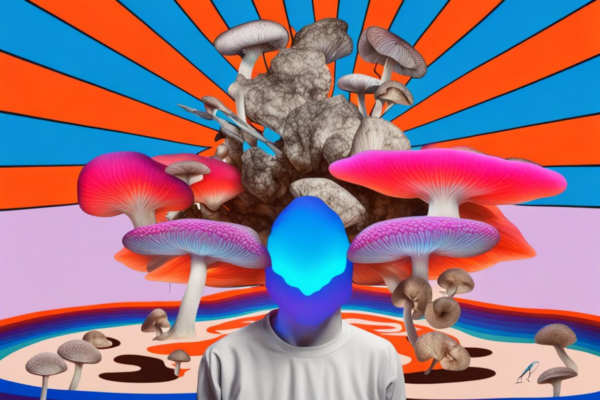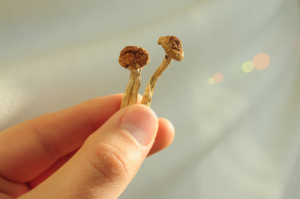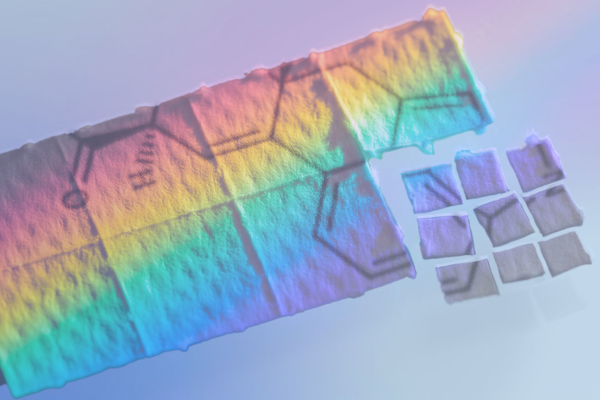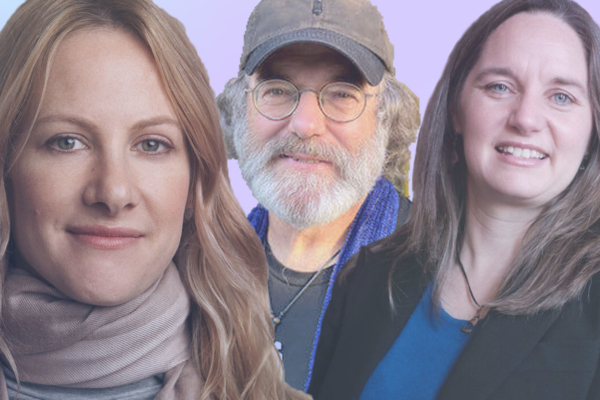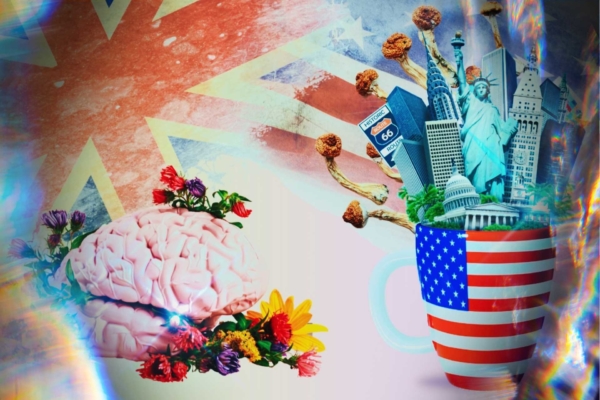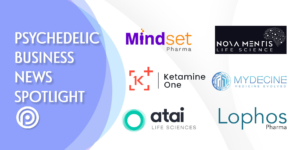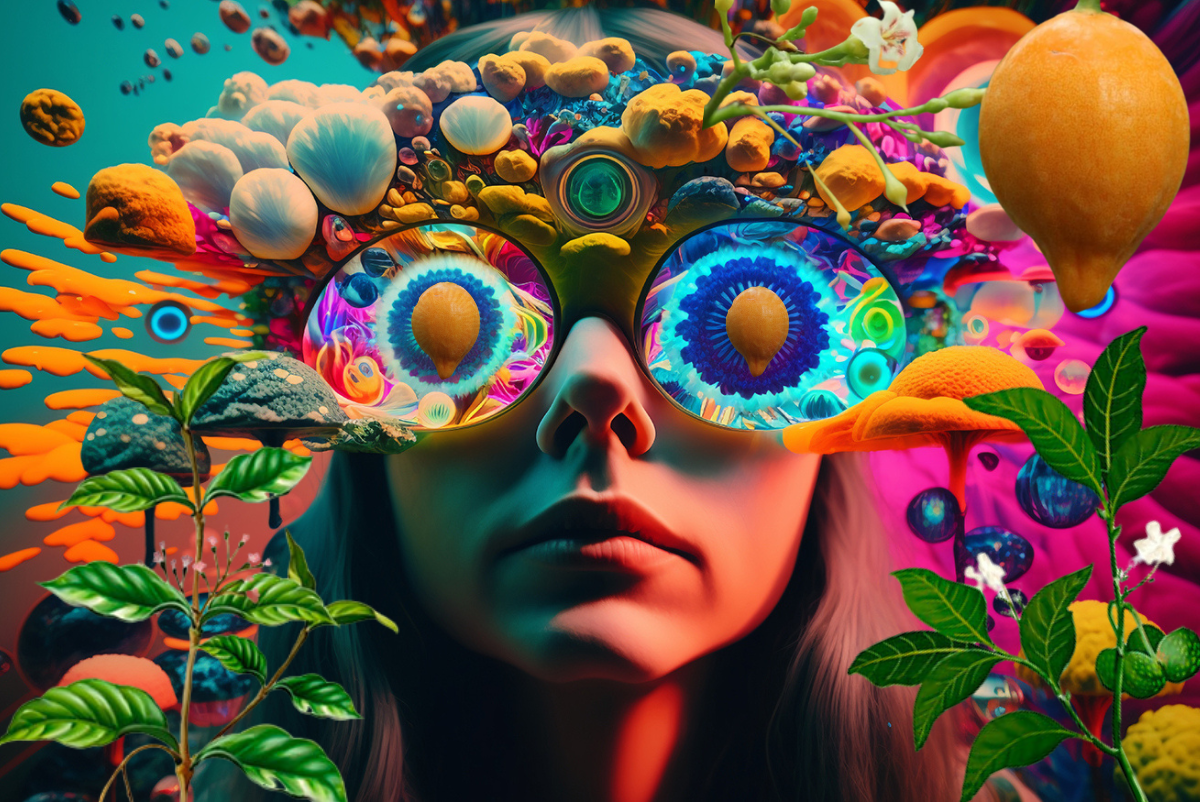
Imagine sitting in a movie theater – all alone. The movie you’re watching seems very familiar and in fact, you know all the actors in it. They’re your friends, your family, your acquaintances, teachers, even pets, and… the main character is you. This movie is a clear and objective visual representation of every moment of your life. You can see all your memories, all traumas, all feelings and events that have sculpted you into the person you are today. This may sound deeply uncomfortable to some, especially if traumatic moments which you’ve forcefully “forgotten” or stored away deeply into your subconsciousness begin replaying in a cinematic vignette motion. Now imagine that while you’re watching this motion picture, you’re detached from all ego, all intrusive and all egocentric thoughts and emotions. There’s no shame, no anger, no fear, no sadness – a complete state of spiritual awakening and introspection. You can replay the scenes as many times you want, rearrange them, and analyze every actor’s point of view. The best part, you can control the movie in order to investigate the scenes that have led to a specific denouement in your life, and not just this one, but all past lives. For those who have ever gone into regression therapy, this may sound vaguely familiar. For others, not so much. This is as close as I could get to describing the ibogaine psychedelic experience.
While most psychonauts, policy makers and researchers are interested in studying classical psychedelics such as magic mushrooms, DMT and LSD, which are all substances that lead to an externalized mystical experience with encounters of higher, otherworldly dimensional beings passing on universal knowledge and a profound ego-death experience, ibogaine, the psychedelic that puts you into a 12 hour waking dream, has remained in the backstage – until now.
Ibogaine is a naturally occurring psychoactive substance extracted from the roots of the iboga plant (Tabernanthe iboga) which is a member of the Apocynaceae family and the richest source of ibogaine. Its unique psychedelic experience is so intense and mind-boggling that when participants were asked to describe it in one study, 90% of them said the experience was challenging to verbalize. The iboga root has been used for centuries for Bwiti spiritual practices in West-Central Africa, mainly Gabon, the Republic of Congo, and Cameroon, and it’s traditionally used to treat anxiety, depression and other diseases of the mind.
Recently, ibogaine has seen more news coverage thanks to GOP Congressman and military veteran, Morgan Luttrell, whose testimony credited ibogaine and 5-MEO-DMT therapy for changing his life and changing his marriage. Him and several other GOP lawmakers and military veterans discussed a newly introduced bill which aims to create a $75 million federal grant program to support research into the therapeutic potential of psychedelics for certain health conditions among active duty military service members, such as PTSD, brain injuries, and chronic traumatic encephalopathies.
If passed, the bill may expand research into ibogaine, which may be even more effective in the treatment of addiction and trauma than psilocybin and MDMA – the two psychedelics designated as breakthrough therapy for depression and PTSD.
Ibogaine’s Therapeutic Applications
In the last few decades, a number of studies have indicated that ibogaine is efficacious in treating opioid dependence. A recent observational study with opioid users showed a 75% remission rate after a single ibogaine administration and larger observational studies from clinics in Mexico showed up to 50% in remission, surpassing traditional medications such as methadone and buprenorphine (average 8–35%). Moreover, a single treatment’s therapeutic effect lasts 2–3 years, or even longer when coupled with intensive counseling therapy and aftercare during the interruption periods for treatment.
Ibogaine’s anti-addictive properties are known to work wonders on people struggling with various substances, such as cocaine, amphetamines, alcohol, nicotine and more. Unfortunately, the compound is illegal in the United States, currently classified as a Schedule I-controlled substance, and is not approved for addiction treatment (or any other therapeutic use).
You may also like: Guide to Ibogaine – The Ibogaine Experience, Benefits & Side Effects
Luckily, the substance is tolerated in Mexico, where ibogaine clinics and retreats can operate freely. I had the pleasure to speak to Tom Feegel, the Founder and CEO of Beond, an odd combination between a luxury retreat, a medical facility and wellness center that treats some of the hardest cases of addiction, trauma and depression. We discussed some of the compound’s unique properties, experience, therapeutic effects and more.
The ibogaine Beond uses is manufactured, using the natural plant root bark. However, it’s purified, tested and concentrated because the facility’s medical staff wants to be precise with the dosage.
“If you’ve ever been in an ayahuasca ceremony and they gave you a cup, you never quite know how much is in here. We don’t want that experience for anyone here. There’s nothing wrong with it in the ceremonial setting, but in a more clinical setting, it’s precision that matters greatly. We are a class one medical facility with licensed credentials, medical doctors and ICU certified nurses. They’re trained in advanced cardiac life support, and they function in what is exactly like an ICU. It is the world’s sexiest ICU, Tom Feegel told Psychedelic Spotlight.”
Beond has the same equipment, the same technology, the same training and talent as you would expect in any major metropolitan city, it has beautiful murals and salt lamps and aromatherapy and custom design playlists and a very comfortable, warm, nurturing space. However, the treatment center’s main goal is to ensure the safety of all guests .

“But we want everyone to feel safe, and in order to do that most effectively, we need to make sure that people are safe”, Feegel touted.
Ibogaine Experience and Therapeutic Effects
Ibogaine usually lasts about 12 hours. It’s three times as long as what might be the most intense part of an ayahuasca experience.
MH: Can you tell me a bit more about ibogaine and what makes it different from the more popular psychedelics out there?
TF: So, ibogaine obviously is a hydrochloride. It is a pharmaceutically manufactured derivative of the natural plant iboga and it is therefore much stronger because it’s a concentrate of iboga – hence the name “ibogaine”. The experience of ibogaine is very deep and very long compared to other psychedelics, which might last just a few minutes in the case of DMT, or a little bit longer with a ketamine type of experience. Even if it’s intravenous we’re talking about tens of minutes or an hour maybe. For ayahuasca, the whole ceremony may be several hours, but only one third of it is really where the psychedelic experience is most intense – about two or three hours. Ibogaine usually lasts about 12 hours. It’s three times as long as what might be the most intense part of an ayahuasca experience.
Also of note, many psychedelics feel like we go out into another dimension, into a different sense of time and space – but we go out. With ibogaine, you feel like you go deep into your own consciousness in a very dreamlike state that feels autobiographical, but is also, like most dreams, somewhat symbolic. While the symbols in your dream state have some correlation to your so-called everyday reality, this is like an extremely deep, extremely long lucid dream – like a lucid autobiographical symbolic dream lasting 12 hours.
Now, because you feel safe (at Beond) and you’re in this safe environment, you can relax and time is shifted. So it doesn’t feel like twelve hours, it might feel like one hour, but there’s multiple shifts of it, certified nurses taking care of you, there’s a whole shift of doctors watching you while you’re just sort of in this other dimension.
Why Ibogaine is Effective in Treating Trauma
TF: The reason that I believe ibogaine is so particularly relevant for the treatment of trauma, which we believe is the root cause of most chemical dependency is that ibogaine has a unique way of surfacing or allowing someone to witness but not re-experience traumatic events or events which are stored in the memory and in the body. Sometimes you may witness it in the third person perspective, sometimes it’s first person, and while you can witness the event or experience the emotion, you’re detached from it because the ego isn’t present. So, you don’t feel the fear, or guilt, or shame, or blame because it is externalized. There is a deep and rapid processing of trauma that occurs; trauma is often defined as something negative or bad that happens but should not have happened, or when good things that should have occurred did not happen.
In other words, the attachment to some ideal scenario or memory can be re-witnessed but not experienced. You are not attached to it. And the reason you are not attached to it, even if it is not always experienced in the third person, is because ibogaine is a very rational experience—you always know where you are. You may easily forget that you have a body, but if you want to remember, you can simply close your fingers and rub them together, and you will think, “Oh, I know where I am now.”
Ibogaine is very different from a lot of psychedelic experiences, which are very intense and you feel like “Oh, no. I’m lost. I’m untethered from reality.” You don’t have that with ibogaine, so there’s less fear, but you do go much further out of what you would normally label as reality, and it’s about you, so, it’s recognizable. It’s not like random melting walls or fractals or little green men. It might be images and scenes that you recognize from your life.
MH: So, the ibogaine experience is like a deep, introspective regression therapy. Would you be able to just go through your current life or would you be able to access generational trauma?
TF: Absolutely. It’s one of the best benefits. A lot of trauma is intergenerational trauma. Let’s just talk briefly about childhood trauma. The experience of childhood trauma may be what you remember and what you observe, but don’t re-experience any shame or guilt or other negative emotions. You see some story from the narrative around that event, but you have a sense of observation of others who are participants and a sense of seeing them in a more objective way, which can lead to near immediate profound forgiveness and a desire to heal oneself so that we can heal others. There’s plenty of anecdotes about people going back in time, more than one generation.
Maria: This could, in a way, also maybe heal early signs of dementia.
TF: There are a lot of indicators of dementia or other sorts of neurological conditions like Parkinson’s or multiple sclerosis. There’s lots of evidence and video testimonials indicating that untreated trauma oftentimes is considered a contributor to some of those types of immune disorders. The biggest challenge I think for the work we’re doing is that many people’s minds are not ready to remember the trauma. So they’ll tell you, “Oh, I had a great childhood.” And they did because they remember it that way.
Ibogaine’s Use in the Treatment of Behavioral addiction
One of the big benefits of ibogaine is that the experience is so deep and so long that there’s time to essentially study the truth behind that identification, which is not true by the way, they are not a problem, they have a problem.
MH: What types of addictions can you treat with ibogaine?
TF: We treat behavioral addiction. People come for pornography addiction, sex addiction, gambling, eating disorders, even hoarding, which is the inability to throw anything away. All of these addictions are usually traceable to an untreated trauma or more than one. Also, oftentimes people begin to identify as the disorder. They say, “I am depressed, or I am chronically depressed.” One of the big benefits of ibogaine is that the experience is so deep and so long that there’s time to essentially study the truth behind that identification, which is not true by the way, they are not a problem, they have a problem. By the time the patients leave, we have people who come in saying, “I am the problem,” and leave saying, “I am the solution.”
The Neurochemical Effects of Ibogaine
MH: Let’s talk briefly about the neurochemical effect of ibogaine. How does ibogaine affect the nervous system?
TF: So, on the one hand, there is a reset of serotonin 5-HT1A and 5-HT2A. Oftentimes, in these types of transformations – meaning whether it’s interrupting a chemical dependency or behavior – there is a deep wave of depression. The serotonin has been disrupted for a long time, but it has been mistreated or misdiagnosed. People are using some behaviors, some substances, or some maladaptive coping that mask this pattern. A reset of serotonin 5-HT1A causes people to feel stable and normal; it feels like home in their mind and they don’t feel depressed, even though they are no longer using the substance.
On the other hand, it is the case of chemical dependency, especially opiates. There is a reset to the natural or pre-addicted state, or pre-habituated state of the kappa opioid receptor. This is what generally causes hard core fentanyl, oxycodone or hydrocodone users to be unable to go a matter of hours without using, because they will go into withdrawal. Then, they have anxiety about avoiding withdrawal. They have to use around the clock—essentially 24 hours a day—forever. Their only hope is another opiate, like Suboxone or methadone, which are long-acting opiates that make them feel terrible because instead of using the substance they prefer and are conditioned to crave and want, they’re now using something else, which sort of makes the withdrawal symptoms avoidable. Usually, these opiates have a lot of side effects, such as sexual dysfunction, weight gain, and horrendous effects on their gastrointestinal system, which the pharmaceutical industry calls normal – and that it’s the best they can do. Usually, people need to take these medications forever, and it’s a very substandard technology. However, with ibogaine, in the matter of 12 hours, users would have no cravings and no withdrawal.
Ibogaine also causes a massive upregulation of the GDNF pathway which is the Glial cell line-derived neurotrophic factor. GDNF is a protein which, in humans, is encoded by the GDNF gene. This protein promotes the survival of many types of neurons. It signals through GFRα receptors, particularly GFRα1. When the GDNF is upregulated, depression and withdrawal symptoms subside.
So, now these patients no longer have depression or withdrawal symptoms, nor the memory of what it was like to be addicted for 20-something years. Then, they have this sense of passion to change, maintain, grow, and be healthy. They suddenly have a clarity of thought about the damage that has been done to their relationship, their life, their potential, their career, their self-esteem, and their body. So not only are they not using these substances – they’re not depressed. At this point, people really wanna get to work. That’s the polar opposite of what people think about when they think about rehab.
The Ibogaine Experience at Beond
MH: Tell me more about Beond. How is it different than a rehab center?
TF: Beond can be seen in part like a hospital and a trauma-informed mental health facility, similar to a rehabilitation center. We focus deeply on addiction, medicine, and recovery and treatment for depression and post-traumatic stress disorder (PTSD). We also offer sound healing, yoga, aquatic therapy, meditation, and fire ceremonies, giving it the feel of a retreat. However, all the rooms are private and the spaces are beautiful, giving it the atmosphere of a resort. Beond is really a combination of a hospital, rehab center, retreat, and resort filled with people who have received ibogaine treatment here. All of the staff are strongly encouraged to participate in all of our therapeutic activities, whether it be adjunct, such as yoga or body work, or whatever.

MH: Tell me more about the people who come to Beond.
TF: The types of people that we welcome are high-functioning, but some are in acute crisis related to chemical dependency. These 50% of our guest population may very well die very soon if they don’t get help right now, either by their own hand or by an overdose. Approximately 25 military veterans will commit suicide today as a result of untreated PTSD, not accounting for the “collateral damage” to their families and loved ones, and around 300 people will overdose and die today. This is just in the United States alone. We are deeply proud of the fact that we welcome the most severe cases where people are at extreme risk. We start when they decide to come. We begin with telemedicine, and when they finally arrive, sometimes weeks later, we start on day one of the pre-treatment phase, where they are in one-on-one therapy. They may be doing workshops on self-esteem, forgiveness, recovery, or healing their inner child. All these workshops are designed to enable them to experience what they haven’t experienced for a very long time: healing from unworthiness.
Ibogaine treatments and safety protocols
Maria: But compared to other psychedelics, when you administer ibogaine you do need to make sure that people are cleansed from any substances before undergoing therapy, right?
Tom: Well, yes. Obviously there’s a range of risk. There are some medications which absolutely are contraindicated, there are some which are titrated prior, and then there are some which are not really cleansed at all. The number one way to mitigate risk of any type of adverse event is the proper screening. There’s a very robust process that includes review of every aspect of the health history of a client by a licensed credential physician who works here full time. We also have interviews, just like this one, to really get a sense of what might have been left out, forgotten or overlooked before we approve a patient. Then, once approved, we do all our own cardiac screening, EKGs, our own laboratory work, our blood work, to really get a clinical objective perspective of what’s going on in their bodies, with vital organs , their blood and urine – all the chemistry that we can get. That way, anything that the patient may have forgotten to mention, or may have purposefully avoided to mention, is revealed. We don’t judge, but we establish a baseline on day one of all our own analysis. Then, we continue to do those tests up until the ibogaine treatment to make sure everyone is correctly screened. This is all repeated on the day of the ibogaine treatment.
Only then can two people from the clinical leadership team co-sign the order for the ibogaine. We then monitor the entire experience using a 12-lead ECG with an IV, all their vitals being monitored continuously. Even though they’re wearing Apple noise-canceling headphones with custom-made playlists, we’re monitoring a dashboard of what’s truly going on in their bodies and brains for the entire period. Only when we see the indicators that demonstrate that the ibogaine is working and the body has come back to baseline are they discharged from the treatment room itself – and that requires a signature from a physician saying, “OK, they’re good to go.” Nobody walks out and says, “I’m finished” or “I’m bored”- sometimes they are bored. If they don’t get signed out, then they don’t go out. It’s not a prison. But, you know, physical safety is extremely important. Psychological safety may be equally important because our therapists and staff here are trained to be able to solicit from a guest evidence that the feel that their mind is sufficiently understood for them to feel safe. Remember how vulnerable these people are. They might have just overdosed or attempted suicide. These are severely risky people.
There’s also a third dimension of safety, which is emotional safety. Our moods change. They change fast and they change often. Someone does not have to present themselves as polite, happy, convenient or easy going in order to be loved and respected and to be treated with proper care here. You can wake up happy and be mad by breakfast, sad by lunch, depressed by the evening, and curious as you go to bed. This full spectrum of mood is welcome. The fourth dimension of safety is spiritual. We’re not here to tell you that you should subscribe to any particular worldview related to religion or spirit, or even a plant spirit or guide or anything like that; we routinely treat people from a wide range of religious practices.
MH: You’re treating the hardest cases. Can you tell me more about them and how ibogaine helps in healing them?
TF: Not exclusively the hardest cases. About 50% of our guests have a chemical dependency, while approximately 40% come to treat mood disorders, trauma, depression, anxiety or PTSD. Around 10% come for what we call “optimization,” which is a slightly shorter length of time and not significantly less expensive. In some cases, such as opioid use disorder, people with chemical dependency are often convinced that they will die if they continue to live in the same manner; it will only get worse and they will need increasingly more of the substance to reach the same effect. Yes, those are very severe cases. Many of the alcohol use disorder guests drink around the clock and there’s a whole different set of protocols that we need to follow so that the liver functions are optimized for the metabolization of ibogaine, so that they are safe and so that the treatment is effective. However, many of them just have a really bad relationship with alcohol. They go days, weeks, or sometimes months without any alcohol because they’re trying to quit. They have this very disruptive or catastrophic event, they pick up the pieces and they return to this pattern of no drinking. All of a sudden, everything is just too much and they have this event. That’s a very common pattern that may even occur with people you know. They say, “ I’m good, I’m good. I’m not gonna drink too much”. We believe that there’s a psychological reason for that pattern. The psychospiritual spirit of ibogaine actually helps them see that in many different situations, their needs are not met – and they’re not going to be met. So, they just take a little piece of themselves and they set it aside. They’re waiting in traffic, hating their job, or not speaking their truth, or not speaking up, or picking up the pieces for somebody else. All these fragmented selves are stuffed aside over a week, day after day, week after week. And then they need relief because their needs aren’t being met. Unfortunately, the method of achieving relief that would satisfy many of these needs simultaneously and quickly is to make it all go away. However, over time we learn that the pain doesn’t actually go away; we are only granted temporary relief in an unsustainable and ultimately unhealthy way, thus repeating this pattern.
The never-ending question of access to psychedelic therapy
MH: One of the biggest challenges in the psychedelic industry is access to these therapies. Many people can’t afford these treatments. Do you offer programs to facilitate access for those who can’t afford ibogaine treatment at Beond?
TF: We’re very proud of our scholarship program and our fair pricing. We’re very transparent about what we charge and we do sponsor people. In fact, just yesterday, we sponsored a former New York City detective, a retired marine who was injured in the line of duty as a police officer years ago. He’s been on opiates for pain since then and just cannot live like that anymore, but he doesn’t have the money to come. And we would do that for everyone if we could, but there really are certain populations—LGBTQ, physically challenged, indigenous—that are disproportionately affected by these conditions and less likely to seek or have access to treatment. We not only have sponsorships for them – we also have accelerated access for them. So they will not only be free, but they will go to the top of the line if they are qualified and do apply.
Maria: Do you think that there’s a chance that ibogaine gets decriminalized in the United States? Or legalized in a medical setting?
Tom: Well, if you look at the announcement two weeks ago in the state of Kentucky by a Black Republican attorney general. Just yesterday, Republican congressman, Dan Crenshaw announced a congressional bill for use of veteran-assisted programs for investigation of ibogaine. I don’t know. It could happen. There seems to be some movement there.
Ibogaine treatment success rates
MH: Can we talk about your success rate? Do people come back for another treatment? Is there an estimated remission period for ibogaine?
TF: Let’s think about it a little bit differently. To discuss success rate, we need to agree on how we define “success”, right? Firstly, success is relative to what people regard as such in the United States – it’s a matter of choice. In the United States, 2.5 million people go to conventional drug and alcohol rehab every year. Of those just within the US, approximately 50% do not even stay until the end of their treatment plan; they leave. Therefore, we believe this is a key indicator of unsatisfactory service. They’ll just say they’re not satisfied. They’ve paid, they leave and they’re not getting their money back.
I mean, orders of magnitude more than what people pay to come here. They’re paying $30,000 or more and they leave before it’s even 50% finished up to that day. Nine out of ten say it was an unsatisfactory experience, and it did not meet their needs. That’s just how the so-called industry measures “success”. That’s the best that they can do. And God bless all the hard-working people who are trying their best to help people who truly think that is the best way and need it badly. They have saved many of our lives, but they don’t save enough money here.Virtually 100% of the people who come here stay for the entire time; not 50%, not 60%, not 70%, not 80%, not 90%. Only a very small number, in the single digits, have left before the end out of several hundred treatments.
Secondly, we define success as these are people who in most cases the day before they came, they were using life threatening illicit drugs around the clock or we’re unable to function due to severe depression or we’re unable to not just enjoy life but do life at all because of severe PTSD. that’s where they start on day zero. By day 10, they don’t have any of those symptoms. And as I mentioned, they don’t even remember what the drugs felt like. They are full of self-love, full of worthiness, committed to embodying the solution to the problem that they had 10 days before. They identify as the solution, and we think that is a huge success. We’re not putting them on a long acting opiate like suboxone and methadone and saying, “You’re gonna be on this for the rest of your life.” Our guests return on zero opiates and they’re not in withdrawal. Most importantly, they have a written personal custom aftercare plan of what behaviors they should and have agreed to do to take where they are while they’re here and build on it by going to additional therapy, sleep hygiene, nutrition, fitness, other types of trauma work. And as a result of GDNF, they’re passionate about getting started. In fact, they’ve usually started before they leave.
MH: Do some of them eventually have chemical dependency experiences again?
TF: Sure. But the relapse rate is remarkably very low – it’s less than 2% of our guests. However, the relapse period is also very short. They usually pick up the phone, they realize what they’ve done and they want help right away and, and so they don’t often go off the deep-end. Life can get in the way. It may be because they got busy that the life they were given as a result of interrupting this pattern of behavior became more important than avoiding substance use. We think that is the result of the growth they had while here; they are like, “I know I made a mistake, but I want to stop it urgently.”
Closing thoughts
As more and more states begin funding psychedelic research, Kentucky may soon become the first state to endorse and provide significant funding for ibogaine clinical research. The Kentucky Opioid Abatement Advisory Commission is considering allocating $42 million to support clinical trials investigating ibogaine’s potential in treating opioid addiction. Provided the proposal gets approved, Kentucky would trailblaze ibogaine clinical trials in treating substance use disorder. North Carolina and Arizona are also deliberating funding for psychedelic research, demonstrating a ballooning interest in exploring nonconventional treatments for psychiatric conditions. Needless to say, we need to put more effort into addressing the current opioid epidemic devastating the mental health of millions of people across North America, and research into the reported benefits of ibogaine is necessary.
